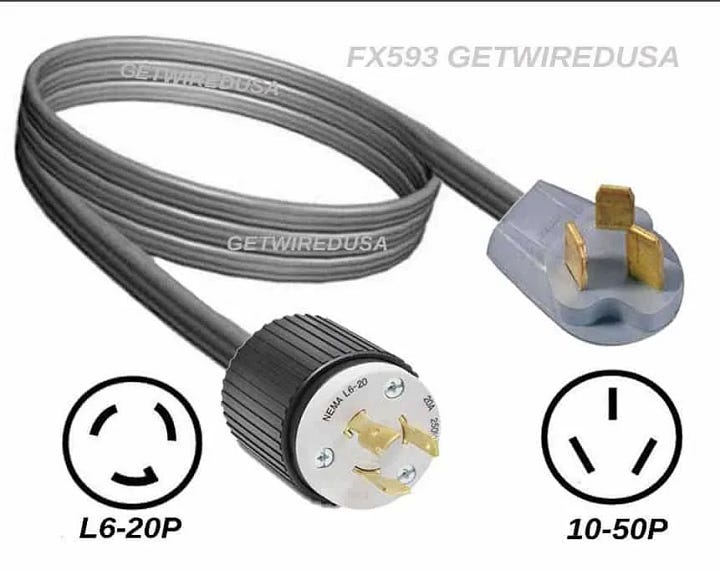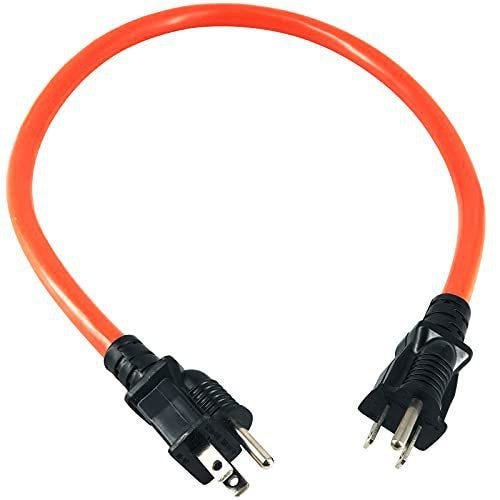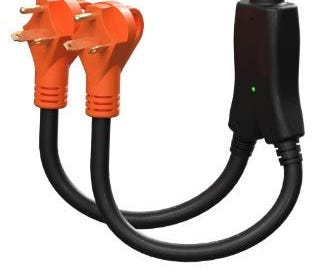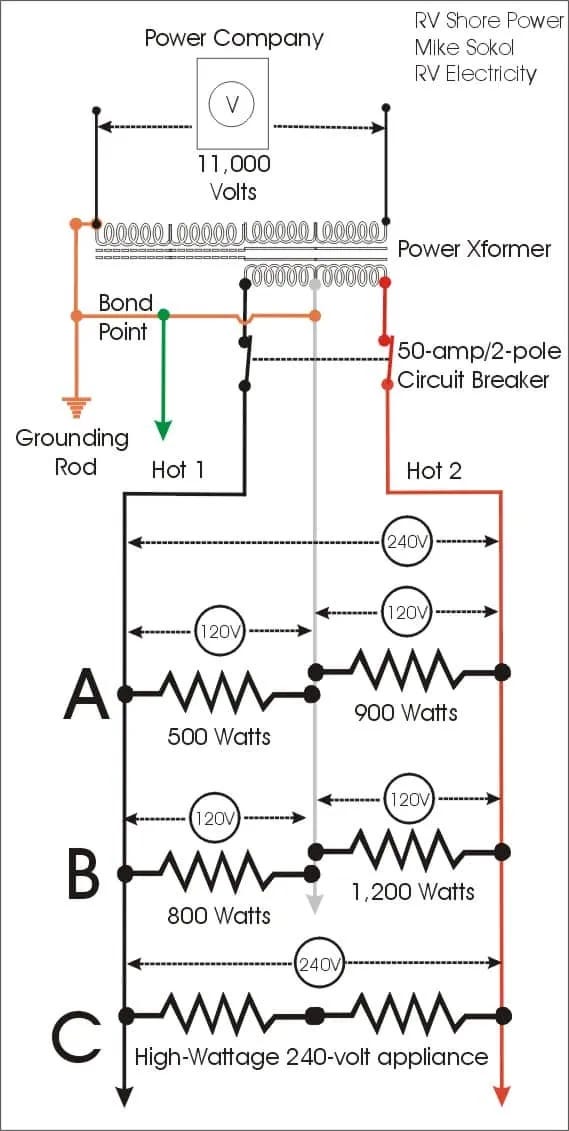Hi Mike,
I just discovered your blog and love it; can't stop reading. I have a concern about this 'Y' adapter though... If both ends are plugged in & connected to opposite phases of the split-phase 240VAC service, all should be good, I agree.
What I'm concerned about is the (hopefully brief) time while only one of the line-side connectors is plugged in, if the load-side (RV side) connector is plugged in first. Do RVs with a 50A input have any 240VAC loads?
If not... If everything is all 120-VAC, then it wouldn't be a problem... but if there are any 240VAC loads, and if those loads are turned 'on', the 'hot' conductor on the plug that isn't yet plugged in becomes a source of low-impedance 120VAC from the OTHER phase until such time as it finally gets plugged in. If someone touches it, or it comes into contact with other metal before it's plugged in, it could cause a shock or short. In that respect it's similar to a suicide cable.


To mitigate that risk you could recommend that the load-side (RV-side) connector always be the last to plug in & the first to unplug, but not everybody would always follow that recommended order.- Mark M.
Dear Mark,
Good points, but not really an issue in 99.9% of the RVs out there. And that’s because the vast majority of RVs with 50-amp shore power are wired with two separate 120-volt circuits, and no 240-volt loads.
In Review
As you can see by the diagram below, RVs are typically wired with only 120-volt loads. The only exception would be when an RV is rewired for a 240-volt high-wattage appliance such as a clothes dryer or stovetop. And I’ve only ever seen two such rewired 5th wheel RVs in the wild. However, I’ve heard of a number of conversion coaches that have factory installed 240-volt appliances. But I’ve never seen one myself in the wild.
What if….
The danger you describe occurs when you have a high-wattage load connected between the Hot-1 and Hot-2 legs (shown on Line C of the diagram). If an RV with a load turned on is connected while you’re plugging in the 30-amp male connectors of a Y-adapter with the circuit breakers on, then you can have a cross feed voltage from one leg to the other, energizing the exposed contacts on the opposite 30-amp plug.
What at the chances?
I think that the possibility of this combination of circumstances would be pretty low, but not impossible. So the safest thing to do during this type of hookup is to make sure that both 30-amp circuit breakers on the pedestal(s) are off while plugging or unplugging the 30-amp Y-adapter connectors. And as Mark noted, connecting the shore power cord from the RV to the Y adapter after it’s been plugged into the pedestal with the circuit breakers off is extra safe.
And the same advice holds for ALL shore power connectors. Always turn off the pedestal circuit breaker(s) while plugging or unplugging any connectors from a pedestal.
Let’s play safe out there… Mike








Mike, Regarding your comment about always having the breaker off when plugging in an RV, what if you are in a situation where you don't have access to the breaker? What is the best/safest way to plug in an RV (20, 30 or 50 amp) while the power source breaker remains on? I have always first plugged in my EMS surge protector to the outlet as normal to make sure the power is good but also turned off the main breaker in the RV when doing this. Does that help?
In 40 years of RVing, I've never seen a pedestal with two 120V 30-amp connections. Most have had at least two out of a 15, 30 or 50 amps connection. A double 30 would give you up to 60 amps with an unbalanced neutral load, assuming single phase. Delays built into transfer switches and surge suppressors will tend to make all of these what-ifs just academic discussions.